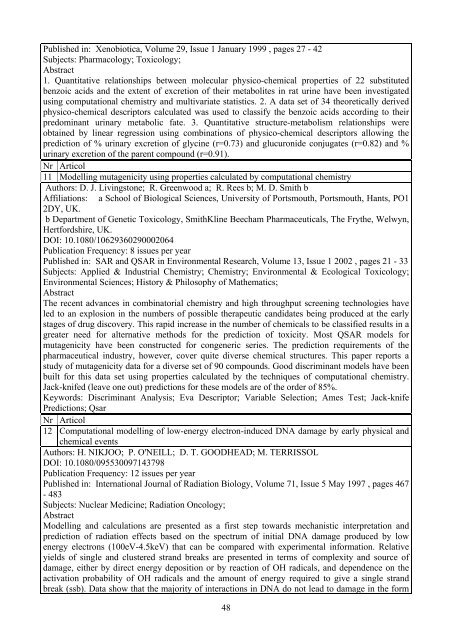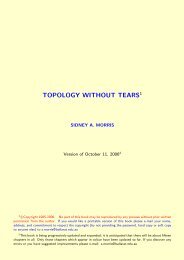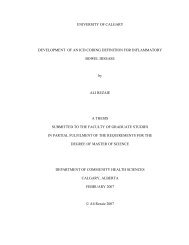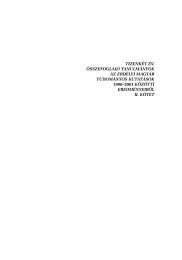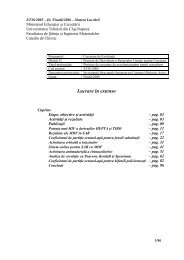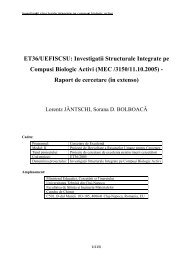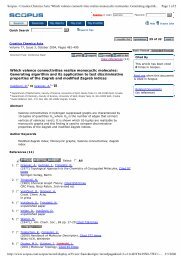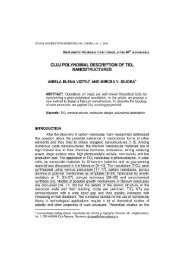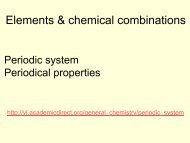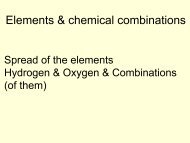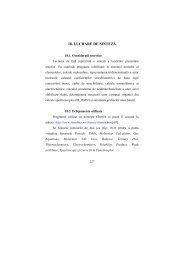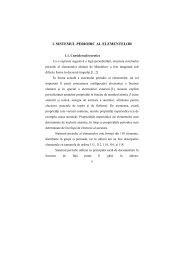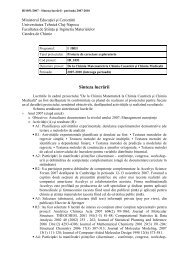Raport de cercetare - Lorentz JÄNTSCHI
Raport de cercetare - Lorentz JÄNTSCHI
Raport de cercetare - Lorentz JÄNTSCHI
Create successful ePaper yourself
Turn your PDF publications into a flip-book with our unique Google optimized e-Paper software.
Published in: Xenobiotica, Volume 29, Issue 1 January 1999 , pages 27 - 42<br />
Subjects: Pharmacology; Toxicology;<br />
Abstract<br />
1. Quantitative relationships between molecular physico-chemical properties of 22 substituted<br />
benzoic acids and the extent of excretion of their metabolites in rat urine have been investigated<br />
using computational chemistry and multivariate statistics. 2. A data set of 34 theoretically <strong>de</strong>rived<br />
physico-chemical <strong>de</strong>scriptors calculated was used to classify the benzoic acids according to their<br />
predominant urinary metabolic fate. 3. Quantitative structure-metabolism relationships were<br />
obtained by linear regression using combinations of physico-chemical <strong>de</strong>scriptors allowing the<br />
prediction of % urinary excretion of glycine (r=0.73) and glucuroni<strong>de</strong> conjugates (r=0.82) and %<br />
urinary excretion of the parent compound (r=0.91).<br />
Nr Articol<br />
11 Mo<strong>de</strong>lling mutagenicity using properties calculated by computational chemistry<br />
Authors: D. J. Livingstone; R. Greenwood a; R. Rees b; M. D. Smith b<br />
Affiliations: a School of Biological Sciences, University of Portsmouth, Portsmouth, Hants, PO1<br />
2DY, UK.<br />
b Department of Genetic Toxicology, SmithKline Beecham Pharmaceuticals, The Frythe, Welwyn,<br />
Hertfordshire, UK.<br />
DOI: 10.1080/10629360290002064<br />
Publication Frequency: 8 issues per year<br />
Published in: SAR and QSAR in Environmental Research, Volume 13, Issue 1 2002 , pages 21 - 33<br />
Subjects: Applied & Industrial Chemistry; Chemistry; Environmental & Ecological Toxicology;<br />
Environmental Sciences; History & Philosophy of Mathematics;<br />
Abstract<br />
The recent advances in combinatorial chemistry and high throughput screening technologies have<br />
led to an explosion in the numbers of possible therapeutic candidates being produced at the early<br />
stages of drug discovery. This rapid increase in the number of chemicals to be classified results in a<br />
greater need for alternative methods for the prediction of toxicity. Most QSAR mo<strong>de</strong>ls for<br />
mutagenicity have been constructed for congeneric series. The prediction requirements of the<br />
pharmaceutical industry, however, cover quite diverse chemical structures. This paper reports a<br />
study of mutagenicity data for a diverse set of 90 compounds. Good discriminant mo<strong>de</strong>ls have been<br />
built for this data set using properties calculated by the techniques of computational chemistry.<br />
Jack-knifed (leave one out) predictions for these mo<strong>de</strong>ls are of the or<strong>de</strong>r of 85%.<br />
Keywords: Discriminant Analysis; Eva Descriptor; Variable Selection; Ames Test; Jack-knife<br />
Predictions; Qsar<br />
Nr Articol<br />
12 Computational mo<strong>de</strong>lling of low-energy electron-induced DNA damage by early physical and<br />
chemical events<br />
Authors: H. NIKJOO; P. O'NEILL; D. T. GOODHEAD; M. TERRISSOL<br />
DOI: 10.1080/095530097143798<br />
Publication Frequency: 12 issues per year<br />
Published in: International Journal of Radiation Biology, Volume 71, Issue 5 May 1997 , pages 467<br />
- 483<br />
Subjects: Nuclear Medicine; Radiation Oncology;<br />
Abstract<br />
Mo<strong>de</strong>lling and calculations are presented as a first step towards mechanistic interpretation and<br />
prediction of radiation effects based on the spectrum of initial DNA damage produced by low<br />
energy electrons (100eV-4.5keV) that can be compared with experimental information. Relative<br />
yields of single and clustered strand breaks are presented in terms of complexity and source of<br />
damage, either by direct energy <strong>de</strong>position or by reaction of OH radicals, and <strong>de</strong>pen<strong>de</strong>nce on the<br />
activation probability of OH radicals and the amount of energy required to give a single strand<br />
break (ssb). Data show that the majority of interactions in DNA do not lead to damage in the form<br />
48


